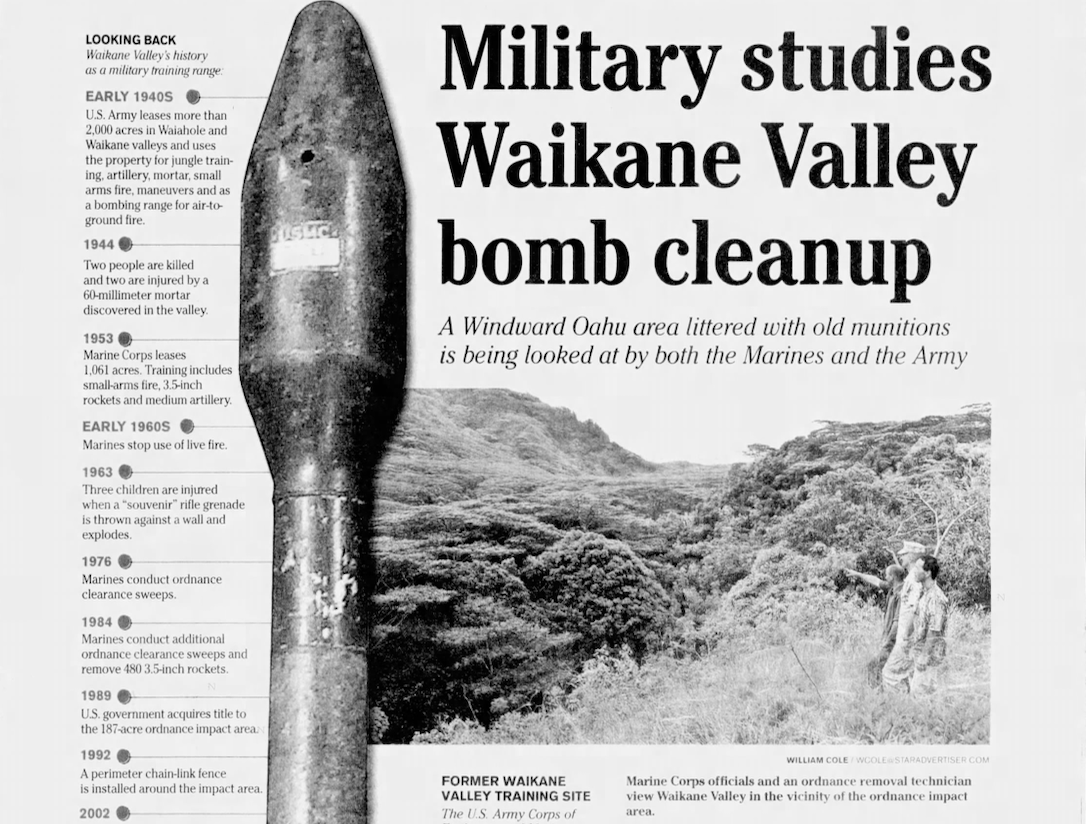Our Moʻolelo

In the 1819 Kaua ʻAi Noa, also called the Battle of Kuamo‘o, ʻŌiwi forces clashed over the traditional kapu religious system. The dispute pitted the forces of Kekuaokalani, nephew of Kamehameha I, who sought to preserve the traditional system, against his cousin, Liholiho (Kamehameha II), who had turned aside the kapu system. Liholiho was victorious, but many warriors from both sides perished in battle and were buried at Kuamoʻo and nearby Lekeleke, including Kekuaokalani and his wife, Chiefess Manono. With her dying breath, Ke Aliʻi Manono is said to have uttered “Mālama kō aloha”— “keep your love”— a plea to both sides that no matter what obstacles come to Hawai‘i, keep your love of one another.
The battle site was purchased for conservation on December 31, 2015, protecting this wahi pana in perpetuity. The ʻāina is now owned by Aloha Kuamoʻo ʻĀina, a 501(c)(3) non-profit organization founded by the Beamer ʻohana, Kanaka ʻŌiwi cultural practitioners and lineal descendants of Ke Aliʻi Manono.
Aloha Kuamoʻo ʻĀina
We envision the land as a center of education for peace, justice, and reconciliation, transforming a place of conflict into a refuge for meaningful learning and place based education integrating Native Hawaiian and indigenous cultures in modern life.
Our Mission
Aloha Kuamo‘o ‘Aina (AKA) is a center for cultural and ecological peace, led by Keola Beamer and Dr. Kamana Beamer. AKA’s vision for the land’s future is to promote aloha ‘āina consistent with the mo‘olelo (stories) and values of Kuamo‘o.
A restored Kuamo‘o landscape will link a vibrant local community with a broad international community dedicated to cultural and ecological peace and justice. AKA is a Federally Registered 501c3 Non-Profit.

Our Vision
Aloha Kuamoʻo ʻĀina envisions the land as a center of education for peace, justice, and reconciliation, transforming a place of conflict into a refuge for meaningful learning and place based education integrating Native Hawaiian and indigenous cultures in modern life. Once the land acquisition is completed, it will engage neighboring landowners and the local community in planning for the land’s future; restoring the cultural, historical and ecological integrity of the landscape; reconnecting keiki, kupuna, and displaced families to the moʻolelo, wahi pana, and values of Kuamoʻo through music, health, and lived experience; and share the values of aloha as practiced by Native Hawaiians and expressed through our islands multiethnic diversity and cultural richness to promote peace and justice in our world.










